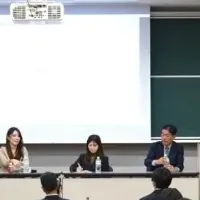
New Study Highlights Risks of Unsecured Remote Access in Industrial Sites
New Study Highlights Risks of Unsecured Remote Access in Industrial Sites
Overview
A new analysis conducted by DeNexus, a renowned provider of cyber risk management for operational technology, has unveiled alarming statistics regarding the cybersecurity vulnerabilities present in industrial sites. The survey, which covered 254 locations across North America, Europe, and Australia, found that an astounding 92% of these industrial sites are exposed to substantial risks stemming from unsecured remote access technologies. The repercussions of this vulnerability could lead to losses as high as $1.5 million per site.
Key Findings
The comprehensive study revealed several critical insights:
- - 88% of sites cited remote services as their primary vulnerability related to cybersecurity, serving as a significant entry point for cyber attacks.
- - The manufacturing sector emerged as the most affected, with average expected losses estimated at $875,000 per location due to these security gaps.
- - Following closely, the renewable energy sector showed considerable vulnerabilities, with projected losses averaging around $150,000.
- - On average, industrial sites could expect annual losses of approximately $223,000 related to remote services.
CEO Insights
Jose Seara, CEO of DeNexus, emphasized the urgency of addressing these vulnerabilities, stating, "The industrial sector's rapid adoption of remote access technology has created a perfect storm for cyber risk. Our research reveals a stark reality—92% of industrial sites are operating with significant cyber vulnerabilities that could lead to substantial financial losses. This isn't just about technology; it's about safeguarding the critical infrastructure that sustains our economy."
Recommendations for Mitigation
To counteract these vulnerabilities associated with remote access, DeNexus has put forth several recommendations:
1. Regular Vulnerability Scanning: Conduct thorough vulnerability assessments and patch any identified issues at least once a month.
2. Multi-Factor Authentication: Implement strict authentication processes to bolster security further.
3. Just-in-Time Authorization: Utilize just-in-time authorization methods to regulate remote access.
4. Network Segmentation: Strengthen segmentation between operational technology (OT) and information technology (IT) systems.
5. Robust Password Management: Maintain stringent password management practices, ensuring regular updates and account lockout policies.
Contextual Relevance
The timing of this report is significant, especially given 2024's findings from Claroty, which indicated an overdeployment of remote access solutions in operational technology environments. This excess creates heightened risks and operational challenges. Concurrently, separate research from Takepoint Research identified remote services as the primary attack vector in 17 out of 24 major cyberattacks targeting OT environments.
Industry analyst Jonathon Gordon stated, "Remote services persist as a critical vulnerability in industrial cybersecurity. To confront the escalating cyber risks associated with remote access, industrial enterprises should evaluate solutions like DeNexus to manage and assess incremental risks effectively."
Conclusion
The full report from DeNexus includes a detailed examination of risk exposures across various industrial sectors, providing thorough recommendations to enhance the security of remote access environments in industrial settings. The urgency to bolster security measures is evident, as industrial sites strive to safeguard their infrastructures while continuing to integrate technological advancements.
For further details, access the full report at DeNexus resource page.
- ---
About DeNexus
DeNexus is an industry leader in end-to-end cyber risk management for operational networks. The company is dedicated to establishing the global standard for cyber risk management within industrial contexts, utilizing advanced simulation and AI technologies to forecast incident probabilities and translate them into tangible financial risks. DeNexus serves a diverse clientele, including Global 1000 companies in energy, manufacturing, transportation, and data center operations, promising an evidence-based approach to cybersecurity economics and risk reduction investments.
Topics Other)










【About Using Articles】
You can freely use the title and article content by linking to the page where the article is posted.
※ Images cannot be used.
【About Links】
Links are free to use.